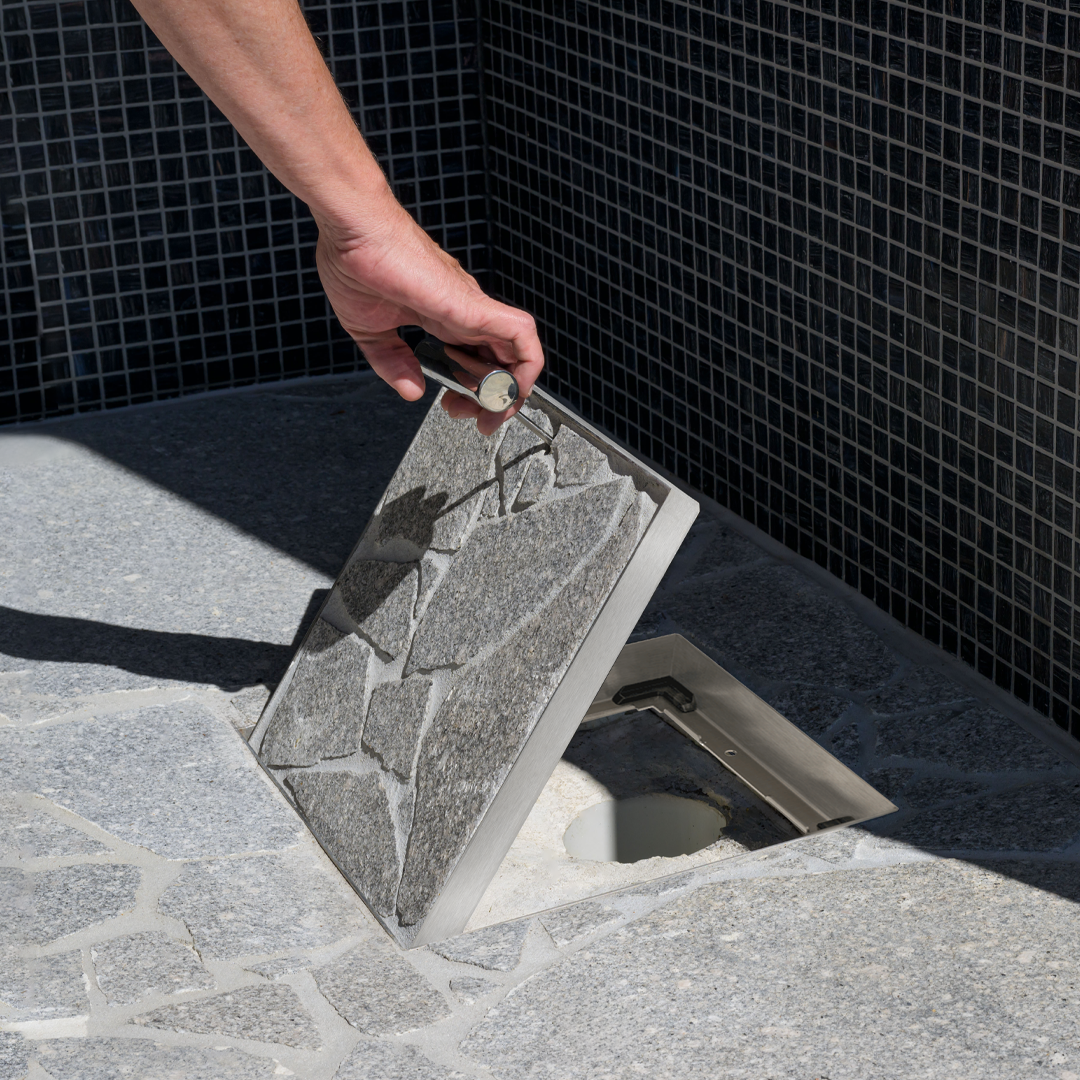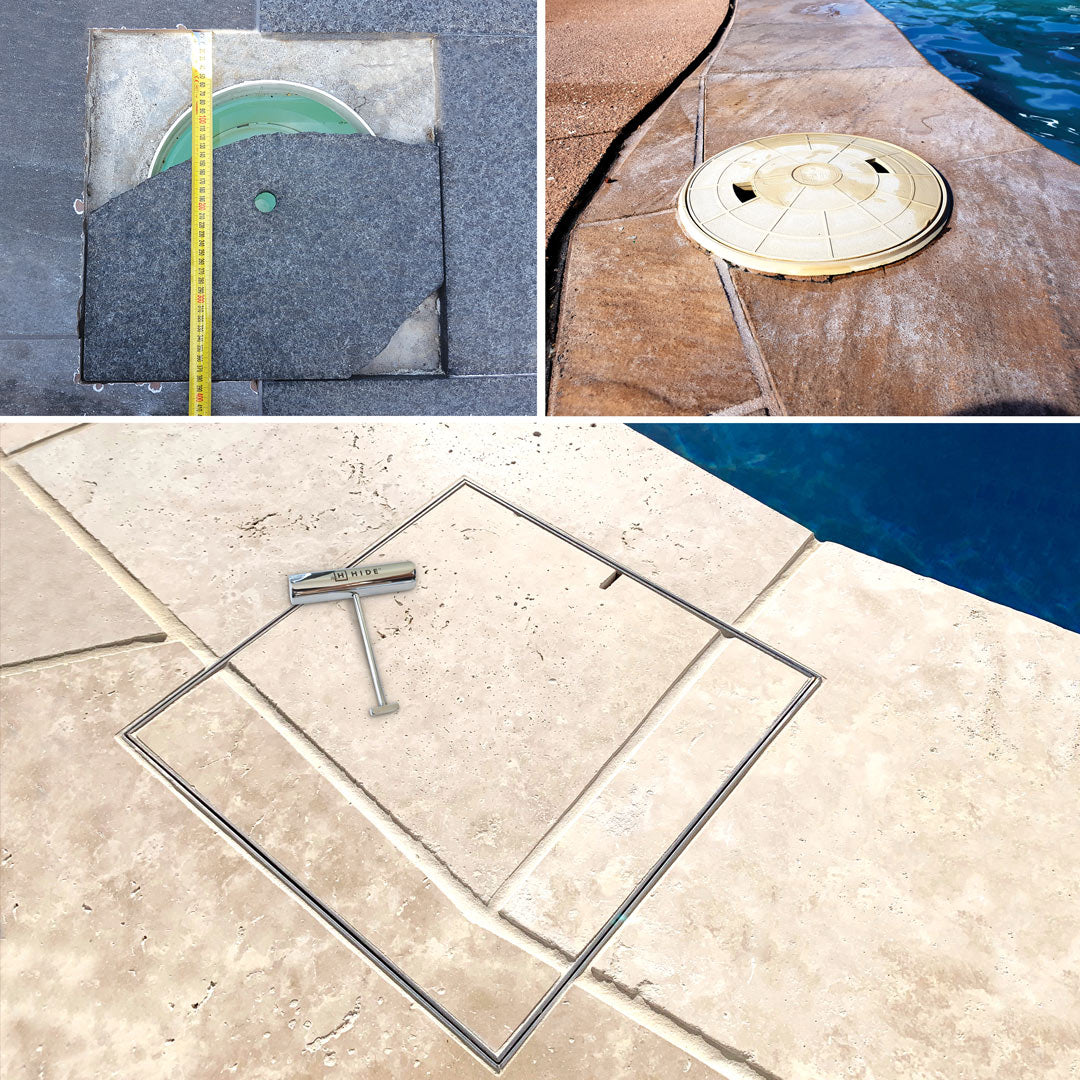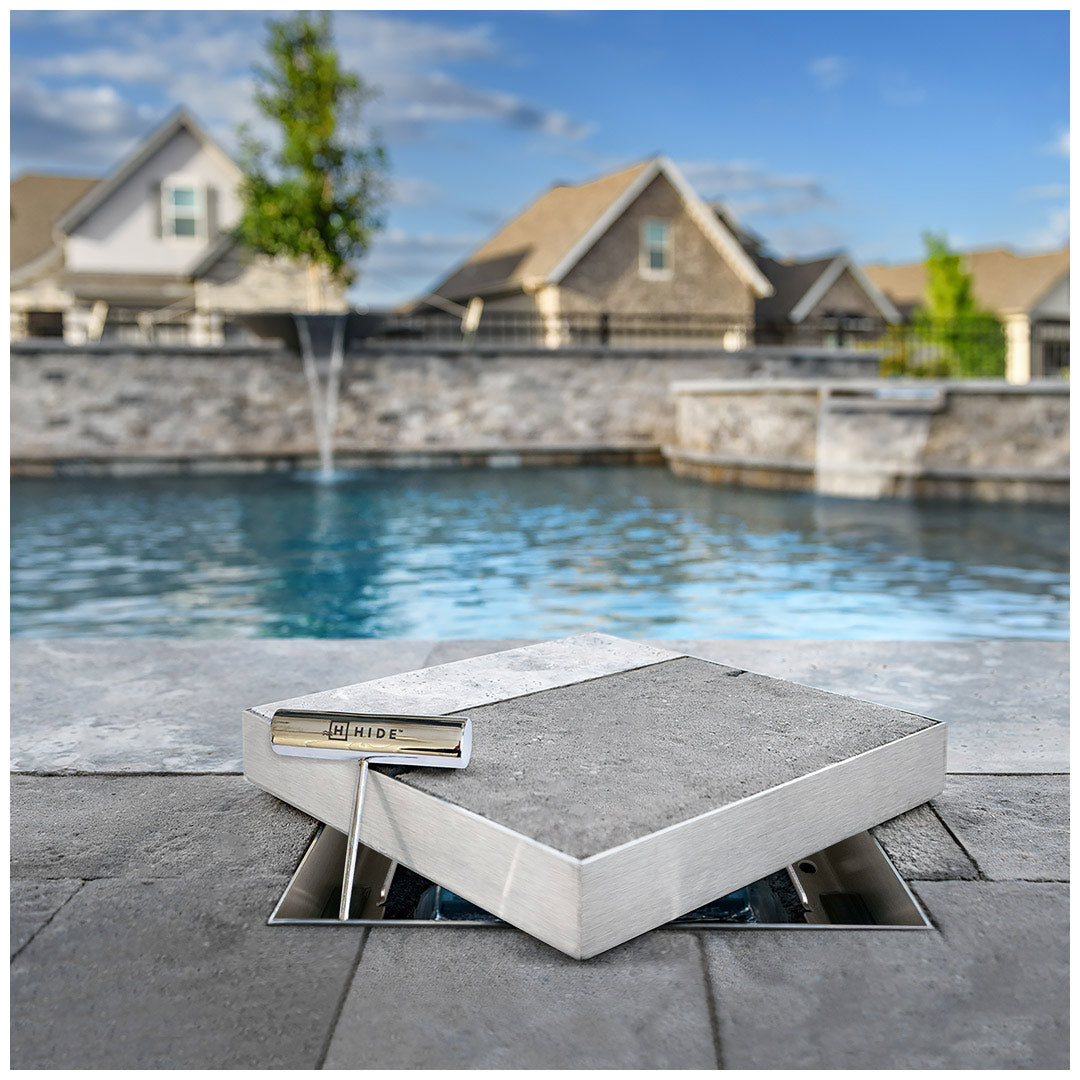Electrical Compliance
Understanding Earthing Requirements for Skimmer Lids
Proper earthing, also known as bonding, is a crucial safety measure in swimming pool installations. It ensures that any conductive components, such as stainless steel skimmer lids, are correctly integrated into the pool’s electrical safety system. The following information outlines key regulations and best practices for earthing skimmer lids in Australia and Europe, helping to prevent electrical hazards and ensure compliance with industry standards.


What is earthing?
Earthing provides a path (a protective conductor) for a fault current to flow to earth.
What is Equipotential bonding?
Equipotential bonding is connecting exposed conductive parts to the same electrical energy, such as that, under fault conditions, the difference in potential between simultaneously accessible exposed and extraneous conductive parts will not electrically shock.
For a comprehensive understanding of earthing and equipotential bonding, you may refer to the following resources:
The fundamental goals of earthing and bonding
Ensuring proper earthing, or bonding, of metallic components in swimming pools is a critical safety measure to prevent electric shock. In Europe, the requirements for earthing in swimming pool installations are outlined in standards such as BS 7671:2018, Section 702, which addresses the specific needs of swimming pools and similar environments. These standards mandate that all extraneous-conductive-parts in Zones 0, 1, and 2—areas in and around the pool—must be connected by supplementary protective bonding conductors to the exposed-conductive-parts of equipment within these zones. This includes metallic components like skimmer lids, handrails, and other fittings that could introduce a potential difference, posing a risk of electric shock. Therefore, to ensure safety and compliance with European regulations, it is essential to bond all conductive parts within the specified zones of a swimming pool installation.
BS 7671:2018 Section 702 (Europe)
In Europe, electrical work, including swimming pool construction and refurbishments, must comply with established electrical installation standards. A critical safety procedure is earthing and equipotential bonding, which protect against electrical hazards by ensuring all conductive parts are at the same electrical potential.
The British Standard BS 7671:2018, also known as the IET Wiring Regulations, outlines specific requirements for swimming pools in Section 702. This section details the necessary measures to ensure safety in swimming pool environments, including guidelines on earthing and bonding. For more detailed information, you can refer to the Institution of Engineering and Technology's (IET) official page on BS 7671.
Given the unique characteristics of each swimming pool project—including variations in layout, design, construction, and equipment—it's essential to select products that meet both safety and regulatory requirements. Collaborating with manufacturers who offer a range of compliant products can help address these diverse needs effectively.
To ensure full compliance with local regulations and safety standards, it's imperative to consult with a qualified electrical professional during the planning and construction phases of your swimming pool project. This collaboration will help identify and implement the appropriate earthing and bonding measures tailored to your specific installation.


Earthing your Skimmer Lid
HIDE Skimmer Lids are designed with safety and compliance in mind. Each kit includes a pre-drilled hole, allowing a licensed contractor to easily attach an earthing wire to meet local regulations. This simple and cost-effective solution ensures compliance with electrical safety standards, giving you peace of mind that earthing is properly managed without extra hassle.




